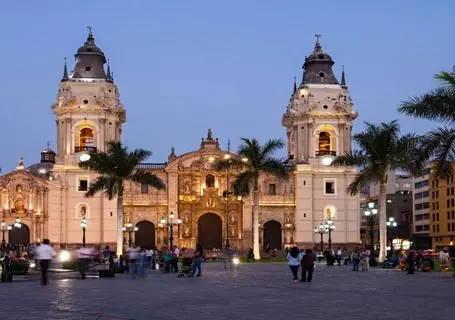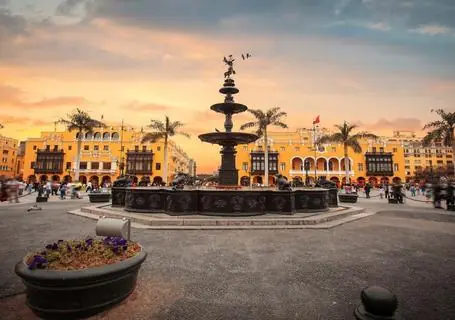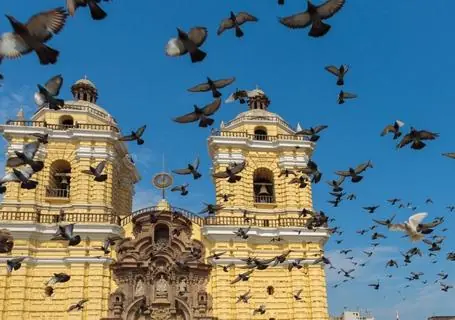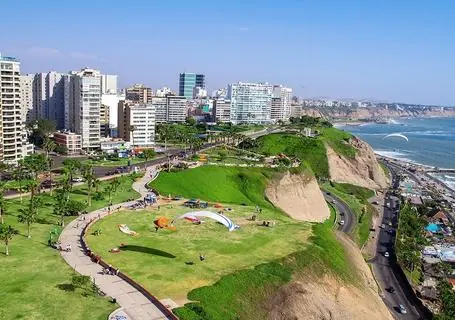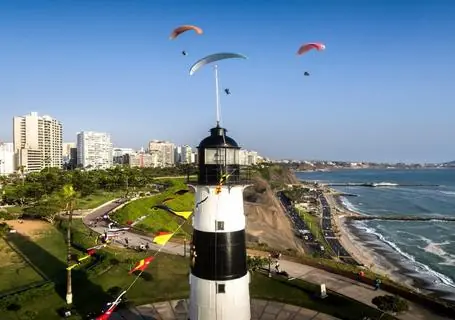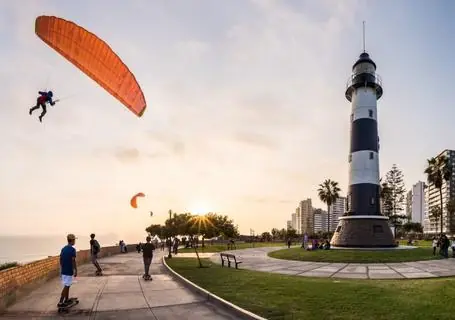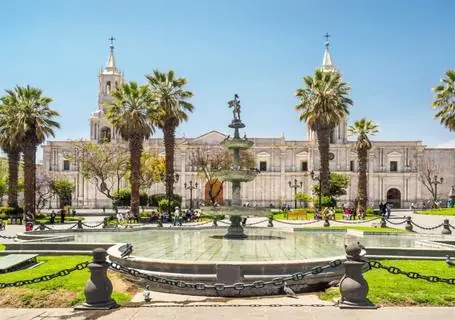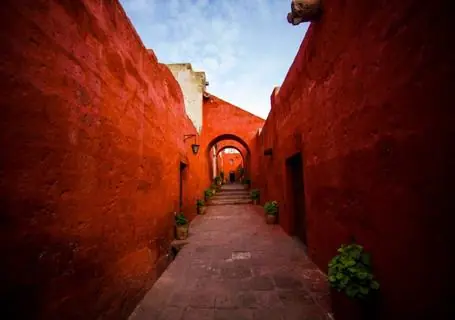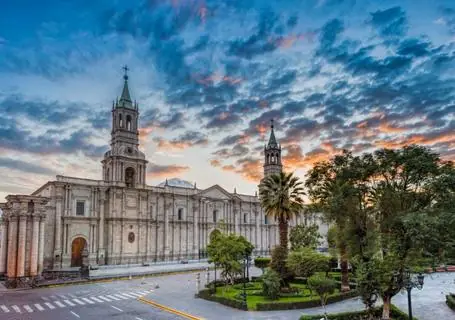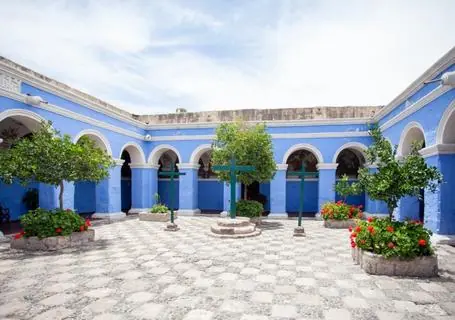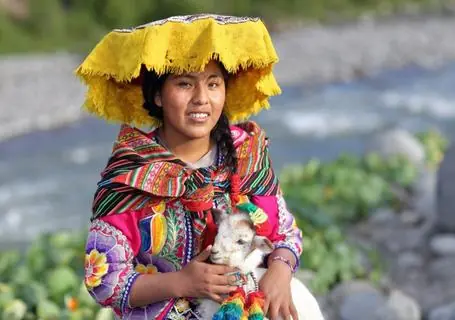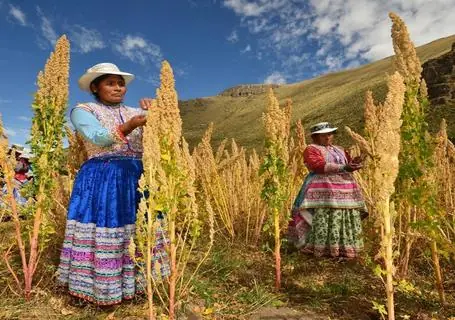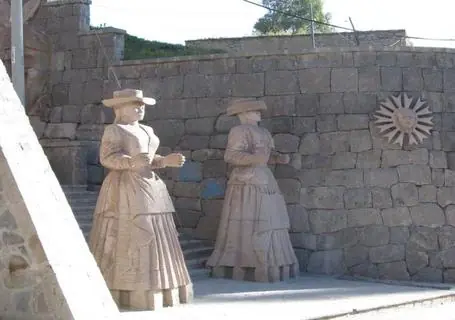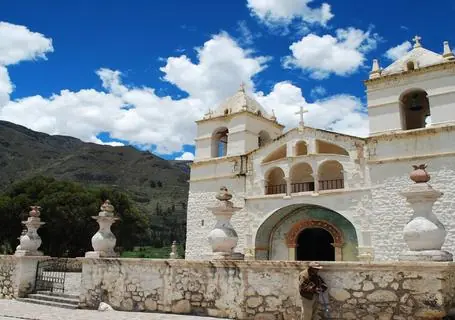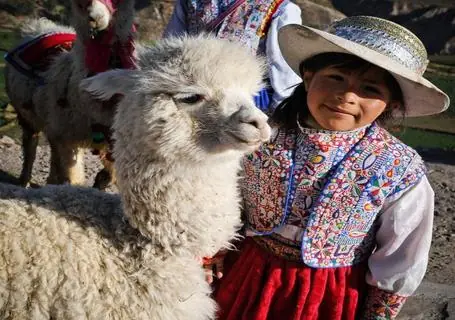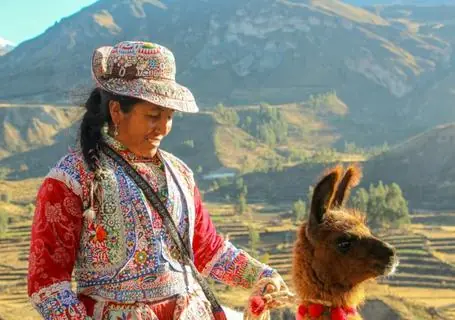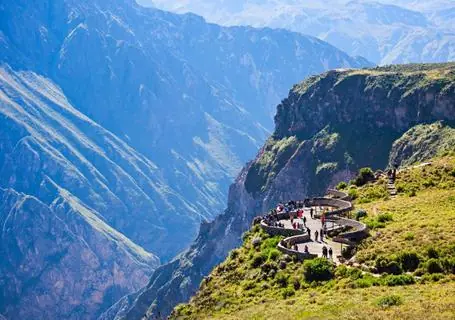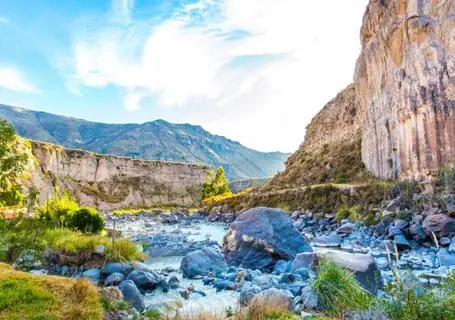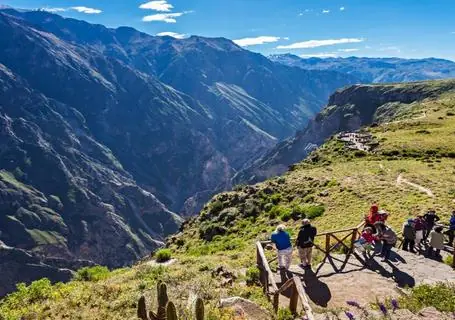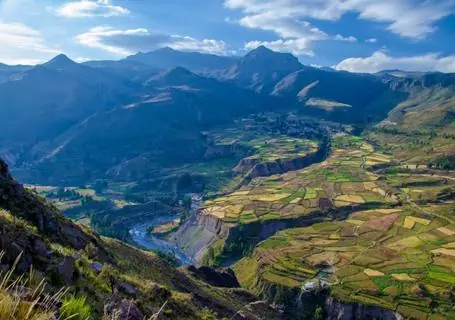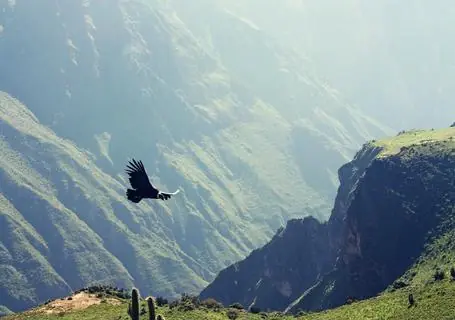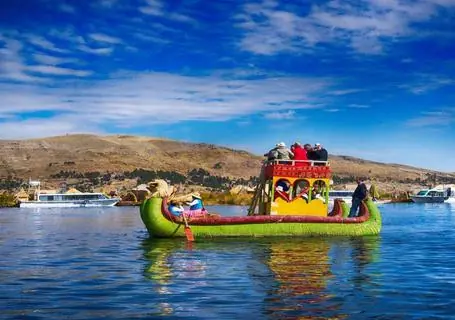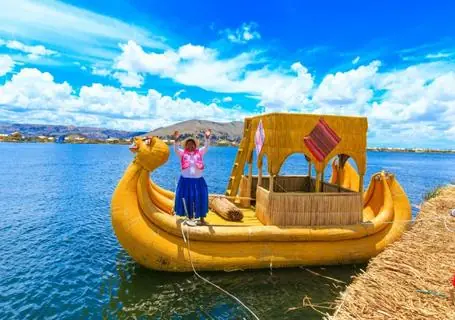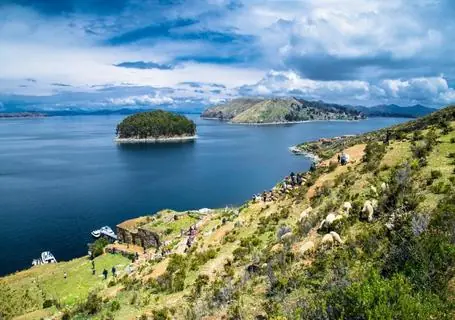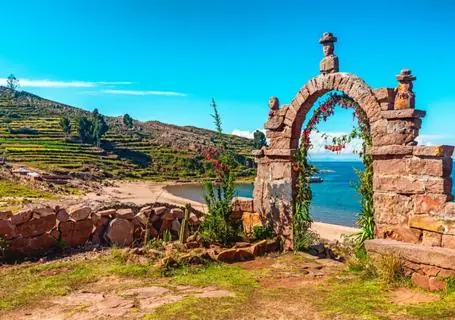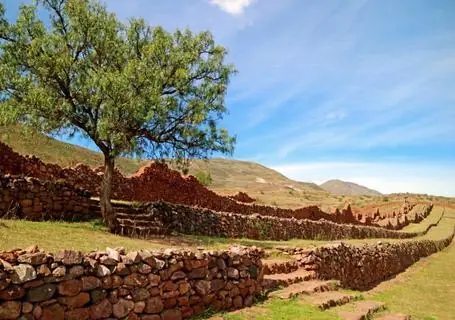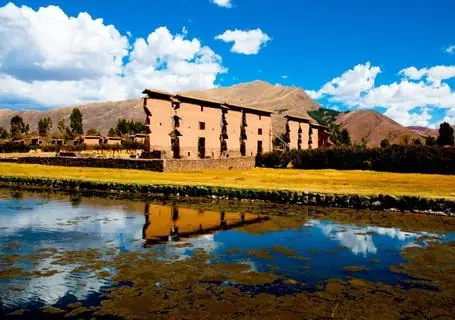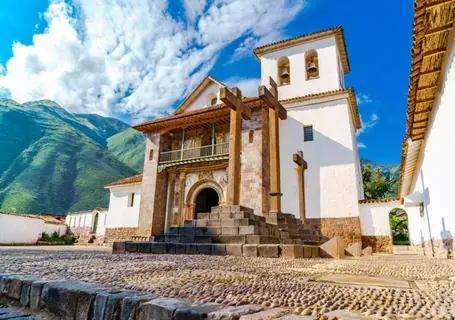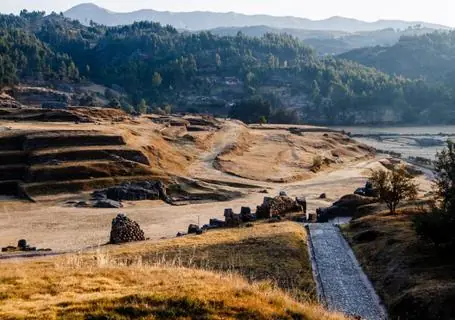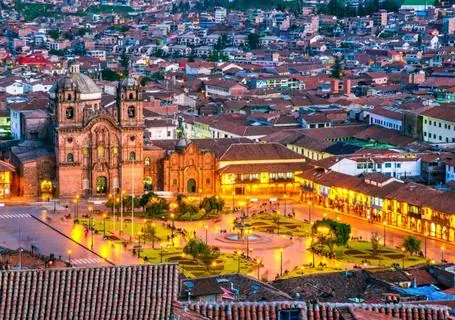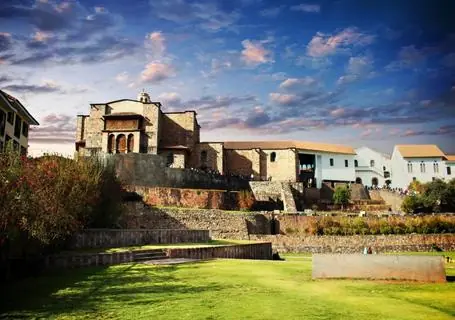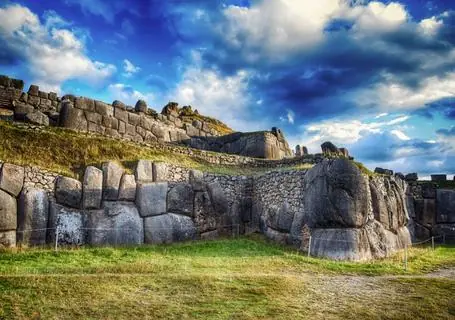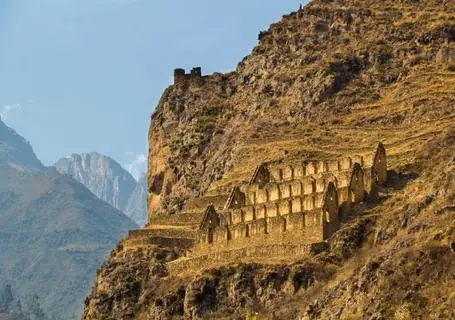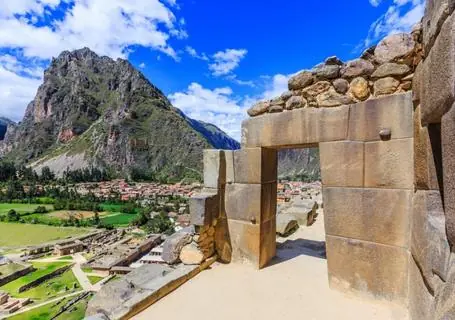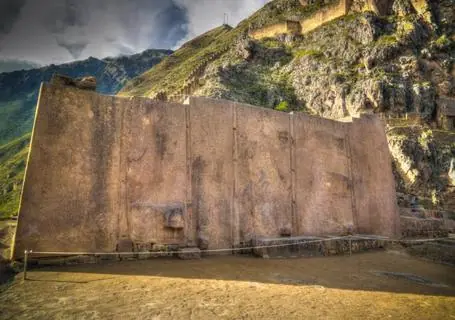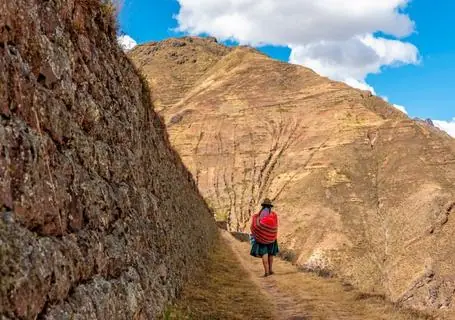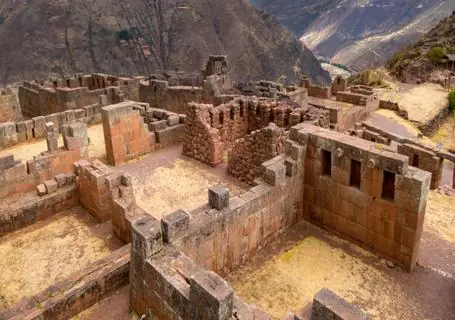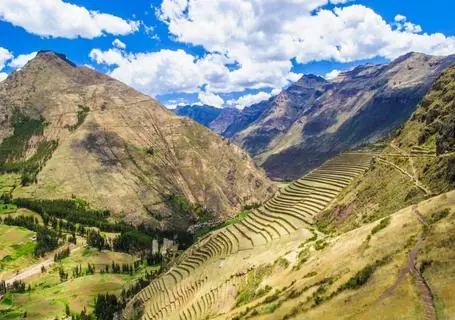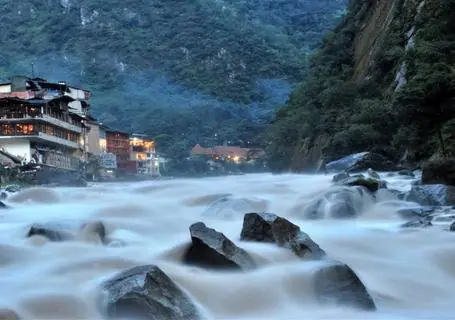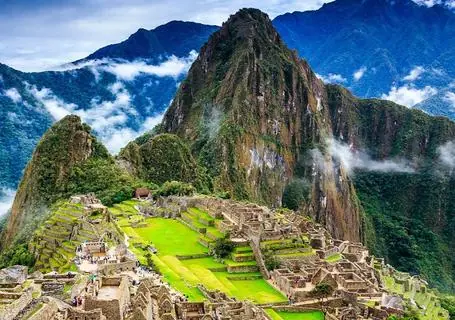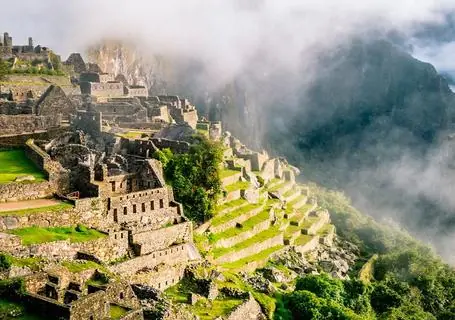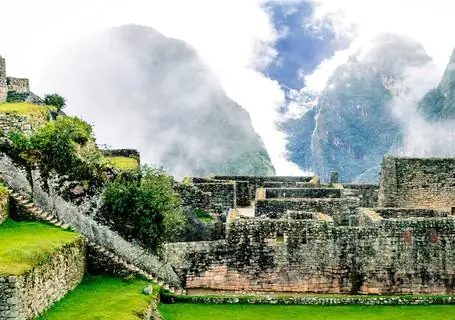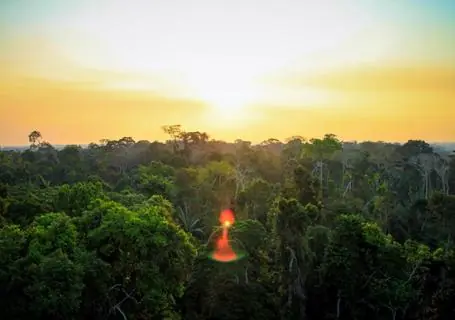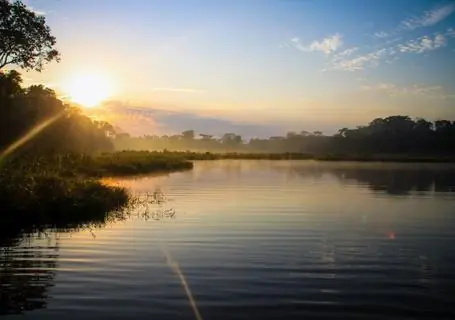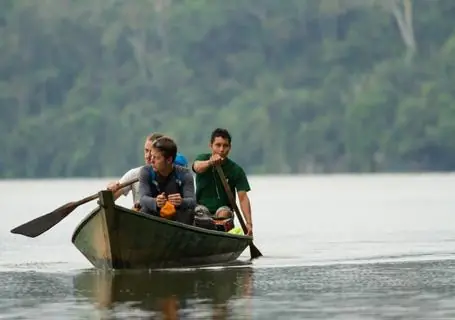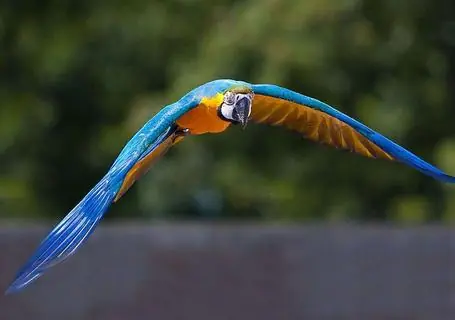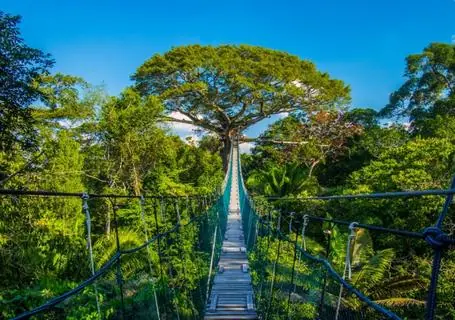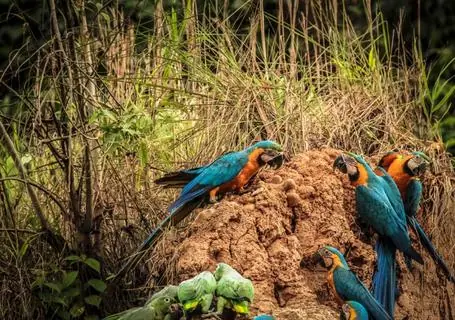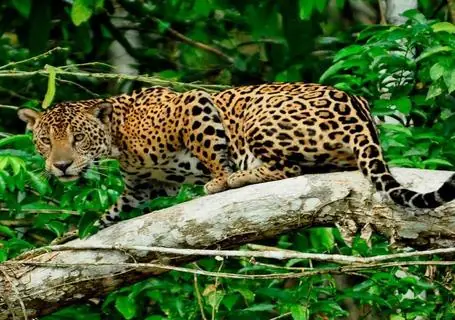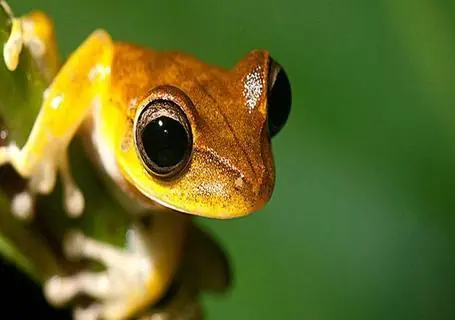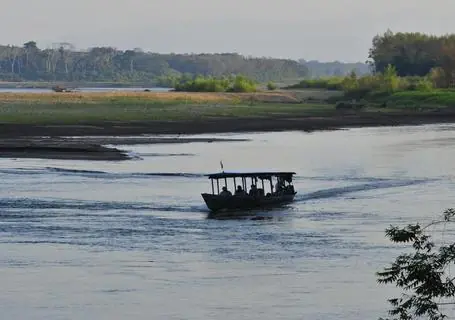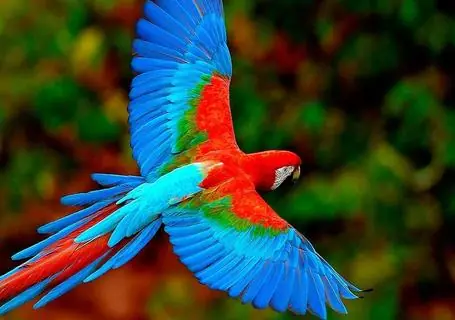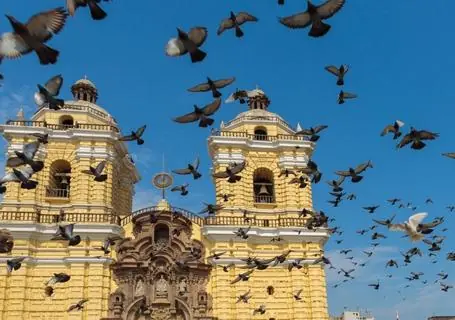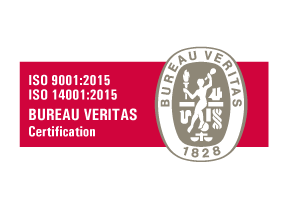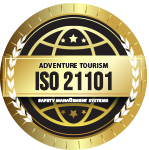The Best of Magical Peru - 15 Days
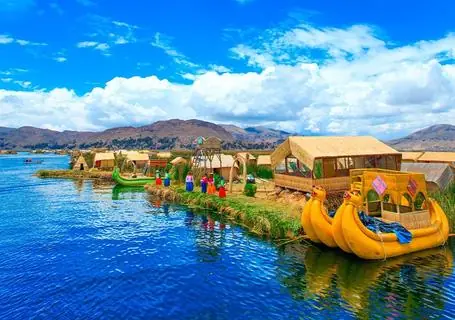
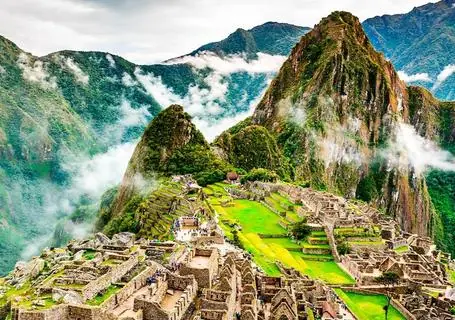
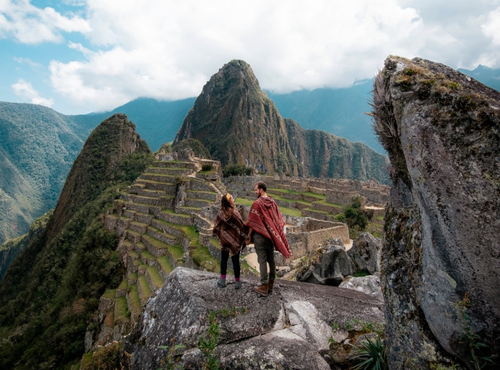
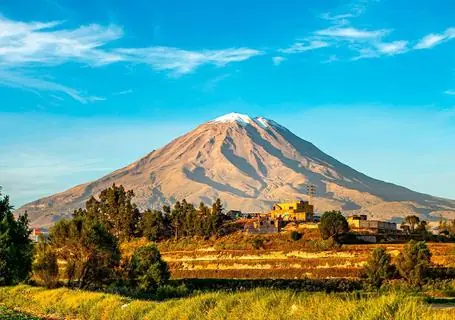
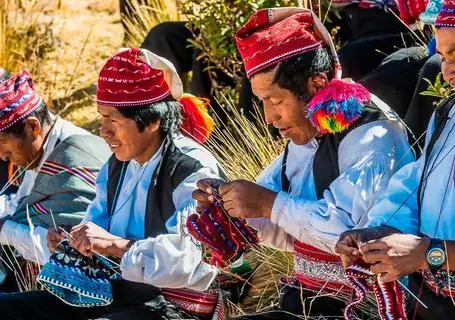
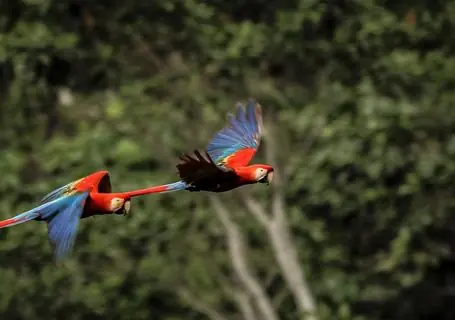
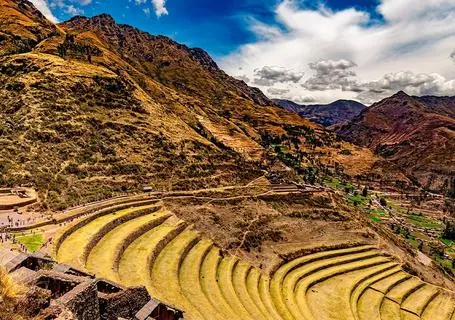 View All PhotosView All Photos
View All PhotosView All PhotosCultural
Easy
Amantani, Arequipa, Cusco, Lima, Machu Picchu, Tambopata National Park
Archaeological / Architecture, Local producers
cardinfo-price-per-adult
| cardinfo-text-5 | ||
| cardinfo-text-7 | Not included | |
| cardinfo-text-8 | cardinfo-not-included | |
cardinfo-text-10
h2-title-1
Are you ready to spend your next trip backpacking in Peru for 2 weeks? This is the ideal amount of time to spend in Peru since it is a large South American country. In fact, it’s important to factor in the distances you’re traveling with the available transportation. Two weeks in Peru allow you to see a decent part of the country. This includes exploring Lima, Arequipa, Colca Canyon, Cusco, Lake Titicaca, and the Amazon Rainforest. This Best of Magical Peru tour covers all these destinations and more while staying within a reasonable budget. The adventure will end of course, at the beautiful Machu Picchu — a major highlight of this Peru Vacation Package!
This Best of Magical Peru Package calls to you with all the allure of the ancient and the mysterious. From the soaring peaks of the Andes to the lush Amazon Rainforest, from the Inca ruins in the mountains to the Spanish colonial mansions on the coast, this magical escorted tour shows you the best of Peru, combining exciting adventures and unique experiences. Delight in every minute of your holiday by spending 15 days in Peru.
 Free Brochure
Free BrochureReady to explore? Download the brochure and start planning!
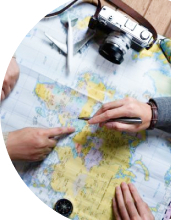
Your FREE travel expert is just a click away
Or Call us now! (888) 803 8004
h2-title-2
Day 1:Welcome to Lima!
From the moment you arrive in Lima to begin your 15 Day Best of Magical Peru Tour, our team member of Valencia Travel will be waiting for you at the Lima airport to take you, in private transport, to your Lima hotel. You will then have all day to relax and enjoy the beauty of Lima and its surroundings on Lima city sightseeing and cultural tours.
- Meals: Not Included
- Transfer In: Lima Airport to Hotel (1 hour approx).
- Tour Guide: Local Tour Guide: English/Spanish
- Hotel: Jose Antonio Lima itinerary-service-hotel-extra
Day 2:Lima The City of Kings
Lima City Sightseeing and Cultural Tours
Today after breakfast, we will head out on out on Lima city sightseeing and cultural tours. The first stop on our Peru tour is Huaca Pucllana, a huge archaeological site in Miraflores, one of Lima’s most popular districts. Huaca Pucllana was an important ceremonial and administrative center of the Lima culture, which developed along this part of the Peruvian coast between 200 AD and 700 AD. This sacred place was built from seven staggered platforms surrounded by a plaza and large walls. It’s a very impressive site, and certainly not what you expect to find in lively Miraflores!
After exploring Huaca Pucllana with your bilingual guide, we’ll drive to the historic center of Lima, all of which is a designated UNESCO World Heritage site. We’ll visit the beautiful Plaza de Armas (Lima’s main square) which is surrounded by impressive colonial and Republican-era buildings, many of which have ornate wooden balconies. Some of Peru’s most important buildings surround the square, including the Government Palace, Cathedral of Lima, Archbishop's Palace of Lima, the Municipal Palace and the Palace of the Union. We’ll visit the Cathedral of Lima, which was completed in 1649. It’s a huge structure, with a large central nave and 14 side chapels. Inside, we’ll see the sculptures and paintings that decorate the interior. The cathedral is also home to the tomb of the conquistador Francisco Pizarro.
Next, we’ll walk one block to the Convent of Santo Domingo. Founded in the 1530s and completed in 1766, it is one of the most important religious buildings in Peru, and its large bell tower is a landmark in the historic center of Lima. As we walk around the interior of the convent, we’ll see the beautiful Sevillian "azulejos" (ceramic tiles) that decorate the walls, dating from 1604 and 1606. There is also a series of paintings that present passages of the life of Saint Dominic, the founder of the Dominican order, which dates to around 1608. This is the last stop on our Lima city sightseeing and cultural tour, but if you want to know more about this fascinating and historic city, you can join us on one of our Lima city tour extensions as part of this 15 Day - Best of Magical Peru tour.
- Meals: Breakfast
- Excursion: Lima City Tour - Shared Service (4 hours Approx.)
- Entrance Fee: Santo Domingo Convent (Only)
- Hotel: Jose Antonio Lima itinerary-service-hotel-extra
Day 3:Lima to Arequipa
After Breakfast, a representative of Valencia Travel Cusco will pick you up from your Lima hotel (time to be confirmed) and take you to the airport where you will take your flight to Arequipa.
When you arrive at the Arequipa airport our team will be waiting there to warmly welcome you and to help you get settled in your hotel. At your hotel, you will find complimentary coca tea and muña tea freely available. These natural beverages will help your body adjust to the high altitude of the "White City "on our Peru tour.
On our guided cultural trip in Peru, the Arequipa city tour will take you through the streets of the White City, passing cathedrals, churches, monasteries, and more. Your guide will tell you all about life in Arequipa, from colonial times through to the present day. You’ll learn how the city has changed, and how the first Spanish colonists built upon an area once home to ancient peoples of the Peruvian Andes.
Next on our Peru Tour, we will stop to admire some of the city’s most famous buildings, such as the Basílica Catedral de Arequipa. Located on the city’s elegant Plaza de Armas, this huge cathedral has been damaged by earthquakes on numerous occasions over the centuries, but each time it has been rebuilt, becoming ever more impressive.
After exploring the Plaza de Armas and surrounding streets, we’ll head to the famous viewpoint of Yanahuara. With its carved sillar stone arches, this beautiful viewpoint offers sublime views across Arequipa and beyond to the volcanic peaks of Misti, Chachani, and Pichu Pichu. Yanahuara was built in the 19th century and stands next to the pretty San Juan de Yanahuara, a Baroque church built in 1750. Engraved into the sillar stone of Yanahuara are the names of notable people who have lived in Arequipa during the last two hundred years.
After our tour of Arequipa, we will take you back to your hotel, secure in the knowledge that you now have a far greater appreciation for the beautiful colonial city that you have visited on your Magical Peru tour.
- Meals: Breakfast
- Transfer Out: Lima Hotel - Lima Airport
- Transfer In: Arequipa Airport - Arequipa Hotel
- Tour Guide: Local Tour Guide: English/Spanish
- Excursion: Arequipa City Tour & Santa Catalina Convent - Shared Service (4 hours approx).
- Entrance Fee: Santa Catalina Convent (Only)
- Hotel: Los Tambos Colonial, (or similar) - Standard Room with private bath.
Day 4:Arequipa to The Colca Canyon
Today, our Peru tour begins early in the morning as we leave the White City of Arequipa and set off along the route to the Colca Valley. It’s a beautiful drive, passing snow-capped volcanoes, rugged pampas, traditional terraced farms, and picturesque villages where the old traditional ways of life are still very much alive.
Along the route of our Peru Tour, we’ll make a few stops along the way, the first at the Aguada Blanca National Reserve, where we can watch innumerable guanacos, alpacas, and vicuñas as they graze on the plains. While there will not be a Peru llama and alpaca farm visit, you can witness these creatures in their natural habitat on this Peru tour. The reserve, which covers almost 366,936 hectares, was created to preserve the local flora and fauna and their natural environment, which was previously deteriorating at an alarming rate. The reserve also protects the local vicuña population through its repopulation program.
Apart from the vast herds of camelids, the reserve is also home to the southern viscacha (a large and loveable rodent), foxes, condors and Andean flamingos (also known as parihuanas). In total, 169 animal species have been identified in the reserve, including 23 mammals and 138 species of birds, such as blue-billed ducks, eagles, and kestrels. During their migration period, flamingos also arrive to spend time wading through Salinas Lake. This classic Peru tour is ideal for Peru birdwatching specialist tours, to view high-altitude species on our Peru eco-tourism adventures.
Leaving the reserve, we’ll drive around the edge of Chucura Volcano until we reach the Patapampa Andes viewpoint. We’ll now be at 4,900 meters above sea level, and from here we can look out across the beautiful landscape to the peaks of snow-capped mountains and volcanoes in the Arequipa Region, including Hualca Calca, Sabancaya and Ampato.
Our next stop on our guided cultural trip in Peru will be the town of Chivay, where one end of the Colca Valley begins. The traditional terrace systems found here, built by indigenous inhabitants of the area, are remarkable for their scale and precise construction. Chivay itself was founded by the Spanish, a fact reflected in its church and other colonial buildings. You can have a traditional lunch in the town (not included) before we check in to our hotel.
You’ll then have the afternoon to explore the town on your own, and, if you like, enjoy Peru Colca Canyon trekking tours or visit the hot springs at La Calera, about 3 km from Chivay. Colca Canyon and the Colca Valley are dotted with natural hot springs and thermal baths, thanks to the seismic activity in the region. La Calera has public thermal baths which are said to have healing properties, with temperatures around 38 C (98 F).
Enjoy all this and more on our Peru adventure travel packages in Colca Canyon!
- Meals: Breakfast
- Excursion: Arequipa to Colca - Shared Service.
- Tour Guide: Local Tour Guide: English/Spanish
- Hotel: Casa Andina Standard Colca. Accommodation in Standard Room with private bathroom.
Day 5:Colca to Puno
It’s another early start today because there’s so much great stuff to see! First, we’ll go to the lookout point known as Cruz del Condor (Cross of the Condor), near the small villages of Maca and Cabanaconde. Here, strong winds rise up from the canyon, providing a favorite spot for Andean condors. They soar on the thermals, often in pairs, normally in the early morning and late afternoon. There’s a good chance you’ll see these magnificent condors, with their three-meter wingspans, flying very close to the lookout point, and providing a truly majestic sight. From the lookout point, you’ll also have incredible views down into the depths of Colca Canyon.
We’ll then head back to Chivay, first stopping off at the traditional village of Pinchollo and the Antahuilque viewpoint. This viewpoint (or Mirador, as they are known in Spanish) offers wonderful views of the 1,500-year-old agricultural terraces that curve along the hillsides like an amphitheater. You can also spot some of the enchanting lagoons of the Colca Valley. We will have lunch in Chivay in the afternoon and then begin the journey to Puno, the Capital of Peruvian Folklore.
This scenic journey to Puno is spectacular and towards the end of the trip, the magnificent Lake Titicaca will come into view. Finally, you will arrive in Puno at around 18h00. Our team will help you to get settled in your hotel where you can enjoy a well-deserved on Lake Titicaca’s shores.
- Meals: Breakfast, lunch
- Transfer: Colca - Puno - Shared Service (5 Hours Approx).
- Tour Guide: Local Tour Guide: English/Spanish
- Hotel: Hotel Royal Inn Puno. Accommodation in Standard Room with private bath
Day 6:Uros floating & Taquile Islands
Our full-day trip on this Peru tour begins around 07:00 when we will pick you up from your hotel in Puno. Then we will go to the port and board our comfortable boat to go to Uros Island, followed by Taquile Island. It is trips to Peru Machu Picchu and Lake Titicaca like this one that show you the real Peru!
When we get to the floating islands, you will probably be surprised by the scale of these floating reed constructions. The Uros originally built these islands for defensive reasons: if a threat appeared, they could move their island homes to a safer location. The islands are made from cattail reeds that grow around the lake, and each island is in a constant state of rebuilding, as old reeds are replaced with new ones. Entering the islands is quite an experience, as the reed floor feels strange under your feet. We will explore the main island and see the houses, watchtowers, and other structures, all built from reeds. Then one of the locals will give a short presentation on how the islands are made and then you can meet one of the local families to see how they live. Next, we head to Taquile, one of the most beautiful islands in Peru, where the traditional way of life is still very much alive. We will meet some of the master weavers of this ancient Andean community, whose textiles are considered among the best in the country. According to legend, the Incas themselves learned to weave from the artisans of this island. In Taquile, the men are the weavers and the women spin the thread.
After seeing the weavers and exploring the beautiful island, we will head to the small port of Taquile around noon
where we will enjoy a delicious menu, made with local products.
Finally, we will return to Puno on our tours of the islands of Lake Titicaca in Peru, where we will take you to your hotel.
- Meals: Breakfast, Lunch
- Excursion: Visit Uros Island and Taquile - Shared Service
- Tour Guide: Local Tour Guide: English/Spanish
- Entrance Fee: Uros & Taquile Island
- Hotel: Hotel Royal Inn Puno. Accommodation in Standard Room with private bath.
Day 7:Puno to Cusco
We will pick you up at 07h00 and take you to the bus station to catch the bus to Cusco. The bus trip is more like a tour - it stops at four interesting sites along the way where you will have guided tours:
• Pukara: This is the most important and oldest ceremonial center of the altiplano. There are interesting sculptures and tombs.
• La Raya: This is the halfway point between Cusco and Puno and the highest point (4335 meters above sea level). The landscapes here are stunning and it is common to see typical Andean animals like the llama, alpaca, and vicuña. It is also the geographical border between the two cultures - Quechua and Aymara.
• Raqchi (Wiracocha God Temple): This was an Inca church of monumental dimensions; 100 meters long, 26 meters wide, and 14 meters high. The temple is divided into two naves, and each nave has eleven giant columns – huge!
• Andahuaylillas: This is the Sistine Chapel of South America: this church is one of the most beautiful examples of Andean popular religious art.
Arrival time to Cusco will be around 5pm.
Optional Service: Folklore Show and Dinner – Cost per person $ 27. Head to the Tunupa restaurant, located just the central Plaza de Armas of Cusco (3 minutes walking from the Hotel), and get ready for a fabulous buffet dinner. There is a large selection of typical dishes, meat, fish, vegetables, and desserts they are amazing and delicious dishes. The night is more enjoyable when the traditional dance show begins and you can get involved with folk, traditional, and classical music, and sweeten your ears with the Andean instruments: Quena, charango, flute, and zampoña. If you wish, you can also share the dance floor with the dancers and get a great experience on this Peru culinary and gastronomy tour.
- Meals: Breakfast, Lunch
- Transfer Out: Puno Hotel to Bus Station (15 minutes approx.) - Assistant in English/Spanish.
- Bus: Puno - Cusco - Shared Service (10 hours Approx).
- Entrance Fee: Pukara, Raqchi & Andahuaylillas
- Transfer In: Bus Station Cusco - Hotel (20 minutes approx.) - Assistant in English/Spanish.
- Hotel: Jose Antonio Cusco itinerary-service-hotel-extra
Day 8:Cusco City Tour
Cultural Heritage Tours in Cusco
After breakfast, our Cusco city tour begins in the morning when we first head to the wonderful Koricancha, next door to Santo Domingo Church. According to the chroniclers who wrote during the period directly after the Spanish Conquest, the Koricancha was the most sacred and most important temple in the Inca Empire. Its walls were covered with gold, and life-size statues of plants and animals – all made of pure gold and silver – decorated its rooms and hallways. Sadly, this wealth was stripped out by the Spanish conquistadors. It remains a magnificent temple, however, and your guide will take you around the Koricancha, showing you details that you almost certainly miss if you visit without a guide.
After visiting the Koricancha, we’ll head to Cusco Cathedral, located on the Plaza de Armas. Built between 1560 and 1654 on top of the foundations of an existing Inca temple, this spectacular cathedral houses many works of art by the Cusco School of painters, and its main altar and pulpit are covered in gold and silver relief work. Look carefully and you’ll also see elements of indigenous religious symbolism incorporated into the church by the native people who worked on its construction, such as the carved head of a jaguar on the doors.
Peru Historical Inca Sites Travel Packages
Our next stop on our Peru tour is the imposing Inca fortress of Sacsayhuaman, which sits on a hill above Cusco. Here you will see some of the finest examples of Inca stonework and construction, including massive rocks that were carefully cut and perfectly fitted together to form the walls. From here you’ll also have beautiful panoramic views of Cusco.
After exploring Sacsayhuaman we’ll head up the hill to the Tambomachay Archeological Complex. The exact purpose of this site is unknown, but it may have functioned, at least in part, as an Inca spa. Inca hydro-engineering is apparent here, with a series of aqueducts, canals, and waterfalls running through the terraced rocks.
Tambomachay is the last attraction on our Cusco city tour, after which we’ll head back down to Cusco and drop you off at your hotel.
Our next stop is the imposing Inca fortress of Sacsayhuaman, which sits on a hill above Cusco. Here you will see some of the finest examples of Inca stonework and construction, including massive rocks that were carefully cut and perfectly fitted together to form the walls. From here you’ll also have beautiful panoramic views of Cusco.
After exploring Sacsayhuaman we’ll head up the hill to the Tambomachay Archeological Complex. The exact purpose of this site is unknown, but it may have functioned, at least in part, as an Inca spa. Inca hydro-engineering is apparent here, with a series of aqueducts, canals, and waterfalls running through the terraced rocks.
Tambomachay is the last attraction on our city tour, after which we’ll head back down into Cusco and drop you off at your hotel.
- Meals: Breakfast
- Excursion: Cusco City Tour - Shared Service (4 hours approx).
- Tour Guide: Local Tour Guide: English/Spanish
- Entrance Fee: Tourist Ticket, Koricancha Temple and Cathedral
- Hotel: Jose Antonio Cusco itinerary-service-hotel-extra
Day 9:Sacred Valley Tour from Cusco - Full Day
We will pick you up from your hotel in Cusco at 08h00 and then set off on our day trip from Cusco to the Sacred Valley. Leaving Cusco, we’ll pass by Saqsaywaman and head over the mountains before descending some 450 meters (1,500 ft) to the valley floor. Here we’ll find ourselves beside the sacred Urubamba River and the pretty village of Pisac. In Pisac, we will visit the colorful traditional market, where you can browse the array of local artisan work and other souvenirs – which of course you can buy to take home with you. We’ll spend about 30 minutes here, and then head up to the ruins of Pisac which sit atop a hill at the entrance to the valley.
At the Pisac archaeological site, we’ll explore the extensive ruins and enjoy the beautiful views across the valley. You’ll be given a guided tour of the ruins, passing through various structures that once served as homes, storage rooms, and temples, and you’ll see Inca altars, carvings, tunnels, caves, and the famous Intihuatana, the “hitching post of the sun.” We’ll explore Pisac for about 90 minutes. Alternatively, if you’d like to spend more time in the market in Pisac instead of seeing the ruins, you can talk to your guide and arrange a time and a place to meet when the tour group returns through the market after the ruins.
We’ll now head on towards Urubamba, where we’ll stop for about 45 minutes for lunch (not included). After another 30-minute drive, we’ll reach the wonderful Inca town and archaeological site of Ollantaytambo. Ollantaytambo was the royal estate of the Inca emperor Pachacuti, who conquered the region and built the town and a ceremonial center. We’ll spend about an hour exploring these magnificent ruins, visiting the amazing Temple of the Sun, and seeing massive blocks of rock that were perfectly carved and polished by master Inca stonemasons. Ollantaytambo is also a fine example of Inca agricultural construction and hydro-engineering, with a complex series of stone water fountains, channels, and agricultural terraces, the latter organized by elevation to create different microclimates for crop experimentation.
We’ll see the extent of the water system when we return to the town, where fast-flowing water channels built by the Incas are still in use today. Walking to the town square, we’ll have great views of the ruins above us, as well as Inca granaries and storehouses built on the sides of the surrounding mountains. Here we can also watch the daily life of Ollantaytambo, where many of the locals still wear traditional dress.
After Ollantaytambo, we’ll drive to Chinchero where we’ll spend about 30 minutes visiting the famous church and the massive Inca stone wall in the main plaza, which has ten trapezoidal niches. The colonial church, meanwhile, dates back to the early 17th century and was built upon the foundations of an Inca temple or palace. The walls of the church are covered in wonderful floral and religious designs. The people of Chinchero are very much connected to the old traditions, and many still dress in colorful clothes that combine indigenous and Spanish influences. We’ll also have wonderful views from Chinchero, as the village is surrounded by the beautiful snow-capped peaks of Chicón and Veronica.
This is the last destination on our Sacred Valley tour from Cusco, so now it will be time to head back to Cusco, where we’ll drop you off at your hotel.
Highest Altitude: 3,762 m (12,342 ft).
Lowest Altitude: 2,792 m (9,160 ft).
- Meals: Breakfast
- Excursion: Sacred Valley Tour - Shared Service (8 Hours approx).
- Entrance Fee: Tourist Ticket
- Hotel: Jose Antonio Cusco itinerary-service-hotel-extra
Day 10:Cusco to Aguas Calientes
Our tour begins in Cusco, where we’ll pick you up at 08h00 and then head to the train station to board the train to Aguas Calientes (also known as Machu Picchu Pueblo). The train leaves at approximately 10h32, although the exact schedule does change sometimes. The two-hour train journey is a memorable experience in itself, as we pass through river canyons and rolling hills.
Aguas Calientes is the gateway to Machu Picchu, sitting in a deep gorge at the foot of the mountain upon which Machu Picchu is located. It’s a pretty town that mixes traditional life with a huge tourism infrastructure, with plenty of markets, souvenir shops, hotels and restaurants. It’s also largely pedestrianized, making it a fun place to explore on foot. Aguas Calientes is surrounded by jungle-covered mountains and cliffs, and the Urubamba River flows right next to the town, sometimes roaring through the canyon.
Aguas Calientes is also surrounded by thermal hot springs, and when we arrive, you’ll have plenty of time to relax and enjoy a dip in one of the steaming natural springs. You’ll also have time to walk around the town, exploring the colorful markets and general buzz of this unique Peruvian settlement.
It’s an early start the next day, so we’ll make sure you’re settled into your hotel and all set for the following day and your first glimpse of Machu Picchu.
We recommend you that keep your luggage in the storage room of your hotel in Cusco (Jose Antonio Hotel) or our office and bring the necessary for the visit to Machu Picchu. You just need to ask for it at the reception / front desk. Train Companies only allow 7 kilos of carry-on per person. If you bring more kilos, they will ask you for an additional payment.
- Meals: Breakfast
- Transfer: Cusco - Ollantaytambo Train Station (2 hours approx). Assistant English/Spanish.
- Train Ticket: Ollantaytambo - Aguas Calientes Train Station
- Hotel: Hatun Inti Boutique itinerary-service-hotel-extra
Day 11:Aguas Calientes - Machu Picchu (Return to Cusco)..
Machu Picchu in all its Glory (and Return to Cusco).
To best appreciate Machu Picchu, we’ll wake up early in the morning so we can get to the citadel in good time. You’ll have time for breakfast first, and then your guide will pick you up from the hotel at around 5:40 a.m. Then we will walk to the starting point of the bus, a trip of approximately 45 minutes in the direction of the citadel of Machu Picchu.
We’ll then pass through the gates to the Machu Picchu archaeological site. Here you’ll begin your guided walking tour with an experienced and highly knowledgeable guide. Our tour of Machu Picchu will last about two hours and will take you to all the most famous and spectacular parts of the extensive archaeological complex. These include the House of the Guardian, Intihuatana, Temple of the Sun, Sacred Plaza, and other key locations. (It will depend on the circuit that the Ministry of Culture determines).
And as we walk around, we’ll have spectacular views across the agricultural terraces of Machu Picchu and across to the surrounding mountains and plunging gorges.
Once we’ve finished our tour of Machu Picchu, we’ll take the bus back down to Aguas Calientes where you can relax and have lunch (not included) before we board the train back to Poroy and Cusco. Upon arrival at the station, our staff will be waiting for you to take you back to your hotel in Cusco, a quick trip of approximately 25 minutes, where you will be able to remember your incredible tour of one of the most famous and impressive attractions in the world.
- Meals: Breakfast
- Tour Guide: Local Tour Guide: English/Spanish
- Bus: Aguas Calientes - Machu Picchu - Aguas Calientes (20 Minutes approx).
- Entrance Fee: Machu Picchu Citadel
- Train Ticket: Aguas Calientes to Ollantaytambo or Poroy
- Transfer: Ollantaytambo Train Station - Cusco Hotel.
- Hotel: Jose Antonio Cusco itinerary-service-hotel-extra
Day 12:Cusco to Amazon Trip
Today you will start a new adventure! In the morning after a delicious breakfast, you will leave “La Ciudad Imperial” and fly to Madre de Dios – Puerto Maldonado. Your Amazon adventure begins when we pick you up from the airport in Puerto Maldonado. We’ll then drive for 10 minutes to our Puerto Maldonado headquarters. If you have any luggage that you won’t need during the next few days, you can safely leave it here, which will help keep the boats and cargo light.
We’ll then drive to the Tambopata River Port, entering the native community of “Infierno”. From here it’s a beautiful 45-minute boat ride to Posada Amazonas in the community’s primary forest reserve. On arrival at the lodge, the manager will welcome you and give you important navigation and security tips.
After you’ve had lunch and settled in, we’ll head off on a 20-minute walk from Posada Amazonas that leads to the 30-meter canopy tower. From the platforms above, you’ll have spectacular views of the vast expanse of rainforest, with the Tambopata River winding through it. You’ll also see toucans, parrots, and macaws as they fly over the jungle, with many other birds in the treetops right next to you.
Returning to the lodge, we’ll have a delicious dinner and you can watch the nightly presentation about the Infierno ecotourism project, given by a local staff member.
- Meals: All Included
- Transfer Out: Hotel - Cusco Airport (20 minutes) - Assistant in English/Spanish.
- Transfer In: Airport Pick up and transfer to Posada Amazonas Lodge.
- Excursion: Amazon Jungle Excursions (Programmed Activities).
- Lodge: Posada Amazonas. Accommodation in Superior Room with private bath.
Day 13:Amazon Rainforest Exploration!
Today we’ll set off to the Three Chimbadas oxbow lake. We’ll board our boat and cruise along the river for 30 minutes, followed by a beautiful 45-minute hike. Once we reach the lake, we can paddle around the lake on a catamaran, searching for the resident family of nine giant river otters! We can’t guarantee that you’ll see them, but around 60% of our visitors get to see these charming creatures. We should also see plenty of other animals, including caiman, hoatzin, and horned screamers.
Afterwards, we’ll take a 20-minute boat drive downriver that leads to a trail designed by the staff of the Centro Ñape. The Centro Ñape is a communal organization that produces medicines out of forest plants and administers them to patients at their small clinic. The trail leads through the various medicinal plants, and your local guide can tell you all about their properties and their various uses.
Later, we’ll head out on a night walk. Many animals are still active after dark, but they are obviously hard to see. But some creatures, like frogs, are much easier to find. And the sound of the jungle at night is quite an experience, making these nocturnal excursions very memorable.
*Please bear in mind that activities at the lodge can change depending on the weather and you can also choose the activities that you prefer from the options available.
- Meals: All Included
- Excursion: Amazon Jungle Excursions (Programmed Activities).
- Lodge: Posada Amazonas. Accommodation in Superior Room with private bathroom.
Day 14:Puerto Maldonado - Lima
After breakfast, it will be time to make our return journey to Puerto Maldonado. We’ll head back to the Tambopata River Port and then continue on to the city. When we arrive in Puerto Maldonado, we’ll take you to the airport for your flight to Lima. In Lima Airport you will be assisted to the Hotel (5 minutes walking).
- Meals: Breakfast
- Transfer Out: Posada Amazon Lodge to Puerto Maldonado Airport
- Hotel: Wyndham Costa del Sol Lima Airport itinerary-service-hotel-extra
Day 15:Lima Final Day
Today is your final day and you will already be at the airport for your flight back home. We wish you a pleasant journey and incredible memories of your Magical Peru Trip!
- Meals: Breakfast
h2-title-3
Secure your spot on the trip now with our real-time availability information.
Act quickly—these spots sell out fast!
h2-title-4
whats-included-title
- Accommodation: Jose Antonio Hotel (2 nights), Tambos Colonial Hotel (1 night), Casa Andina Standard Colca (1 night), Hotel Royal Inn Puno (2 nights), Jose Antonio Hotel (4 nights), Hatun Inti Boutique (1 night), Posada Amazonas (2 nights) Costa Del Sol Wyndham Lima Airport (1 night),
- Meals: 14 breakfasts, 5 lunches, 2 dinners.
- Your Journeys Highlight Moment: Lima, Amazon of Puerto Maldonado, Uros islands, Sacred Valley, Machu Picchu.
- Private or shared transportation.
- All of the entry tickets for the tours on your itinerary.
- Professional guide who speaks English/Spanish.
- Roundtrip train ticket on Expedition service to Aguas Calientes.
- First aid kit.
- Round trip bus ticket from Aguas Calientes to Machu Picchu.
- 24/7 support and emergency line available throughout the itinerary.
whats-not-included-title
- Airfare to and from Peru.
- Domestic flights.
- Medical and emergency evacuation insurance.
- Trip cancellation insurance or any other travel insurance.
- Evacuation: in the event of a serious medical injury, we will coordinate with your travel insurance company to arrange evacuation.
- Visas
- Any activity not described in What's Included,
- Meals on your own.
- Tips/Gratuities.
- Optional excursions.
h2-title-5

specialist-box-title
Maria Diaz
specialist-box-phrase
top-tours-title
top-tours-info
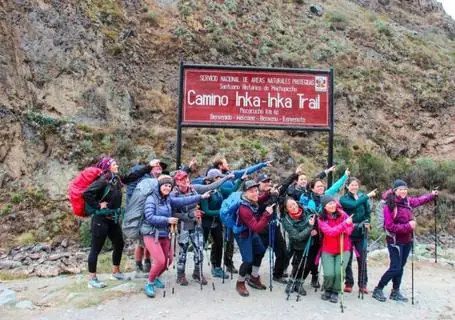
Trek Along the Inca Trail To Machu Picchu
7daysTrek Along The Inca Trail To Machu Picchu with Valencia Travel. We are a renowned Peruvian tour company offering trekking experiences throughout Peru.
card-type-tagAdventure
card-activity-tagModerate - Demanding

Classic Peru Trip
7daysValencia Travel's classic Peru trip is a bucket-list adventure. This 7 Day trip will take you on unforgettable experiences throughout the Peruvian heartland.
card-type-tagCultural, Gastronomy
card-activity-tagEasy
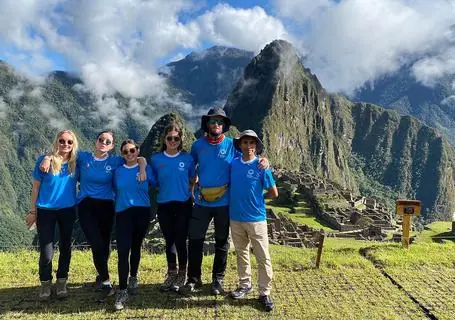
Classic Inca Trail
4daysThe Inca Trail trek to Machu Picchu is the ultimate bucket list hiking experience! Join us on this Classic 4 Day & 3 night Inca Trail Hike!
card-type-tagAdventure
card-activity-tagModerate - Demanding
asso-info-title
asso-info-description
